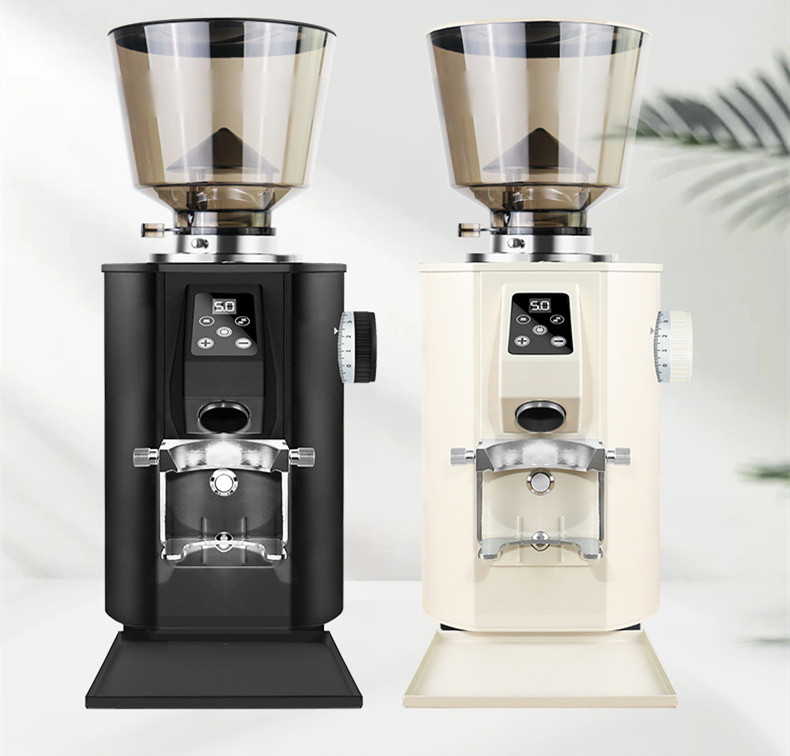How to Adjust Coffee Body (Mouthfeel) Through Grinder Settings and Techniques
Understanding the Link Between Grind Size and Coffee Body
Coffee body, or mouthfeel, refers to the texture and weight of coffee on the palate, ranging from light and tea-like to thick and syrupy. Grind size directly influences body by controlling how much oil, sediment, and dissolved solids extract into the cup.
- Finer Grinds Enhance Body: When coffee is ground finer, water interacts with more surface area, extracting oils and fine particles that contribute to a heavier mouthfeel. This is ideal for methods like espresso, where a fine grind creates a creamy, velvety texture. For example, a grind similar to powdered sugar in espresso machines maximizes extraction of emulsified oils, resulting in a rich, full-bodied shot. However, over-fineness can lead to over-extraction, making the body feel chalky or astringent.
- Coarser Grinds Lighten Body: A coarser grind reduces surface area, limiting the extraction of oils and solids. This suits brewing methods like French press or cold brew, where a clean, light body is preferred. For instance, a coarse grind (like sea salt) in a French press allows oils to remain suspended without overpowering the cup, producing a smooth but less viscous texture.
Experiment by adjusting grind size in small increments (e.g., 0.5 notches on a stepped grinder) and noting how body shifts from creamy to watery.
Leveraging Grind Consistency to Refine Body Texture
Inconsistent grind particles create uneven extraction, where some grounds over-extract (releasing bitter compounds) and others under-extract (leaving behind oils and solids). This results in a muddled body that feels either gritty or hollow.
- Burr Grinders for Uniform Particles: Unlike blade grinders, which produce irregular chunks, burr grinders crush beans into consistent sizes. A uniform grind ensures oils and solids extract evenly, whether you’re aiming for a silky pour-over or a robust espresso. For example, a medium-fine grind with minimal fines (tiny particles) in a V60 pour-over will yield a balanced body without sediment.
- Reducing Fines for Clarity: Fines (ultra-small particles) extract rapidly and can dominate body, making it feel thick but unrefined. To minimize fines, use a conical burr grinder (which typically produces fewer fines than flat burrs) or sift grounds through a fine mesh sieve. Re-grind larger particles or discard excess fines to achieve a cleaner, more controlled body.
If the body feels “chalky” or “gritty,” check for grind inconsistency. A bimodal grind (mix of coarse and fine particles) often creates a disjointed mouthfeel that lacks cohesion.
Adjusting Grind Settings Based on Brewing Method and Filter Type
Different brewing devices and filters influence how oils and solids pass into the cup, requiring tailored grind adjustments to optimize body.
- Espresso Machines: Espresso relies on high pressure to extract oils and emulsify them into a creamy layer (crema). A fine grind is essential to build resistance against water flow, ensuring proper extraction time (25–30 seconds). If the body feels thin, grind finer to increase extraction pressure; if the shot is bitter or dry, grind coarser to reduce over-extraction.
- French Press: This method uses a metal mesh filter, allowing oils and fine particles to remain in the cup. A coarse grind prevents sediment while maintaining a full-bodied texture. For a lighter body, use a slightly coarser grind and pour slowly to minimize sediment transfer.
- Pour-Over (e.g., Hario V60, Chemex): Paper filters trap oils and fines, creating a cleaner body. A medium grind (like sand) works well for most pour-overs, but adjust based on filter thickness. Thicker filters (Chemex) require a coarser grind to avoid clogging, while thinner filters (V60) can handle a medium-fine grind for a slightly heavier mouthfeel.
Pair grind adjustments with brewing parameters like water temperature and agitation. For example, a coarser grind in a French press might need a longer steep time (4–5 minutes) to compensate for reduced surface area, while a finer grind in espresso requires precise tamping pressure to maintain even extraction.
Common Mistakes That Weaken or Overpower Coffee Body
Overheating Grounds During Grinding
Grinding beans at high speeds generates friction, heating the grounds and volatilizing oils that contribute to body. This results in a thinner, less creamy cup. To avoid this:
- Use a low-speed grinder or grind manually in short bursts.
- Let the grinder cool down for 1–2 minutes between batches if grinding large quantities.
Ignoring Water Quality’s Impact on Extraction
Water hardness and mineral content affect how oils and solids extract. Hard water (high in calcium and magnesium) enhances extraction, potentially making body feel heavier, while soft water (low in minerals) may produce a lighter mouthfeel. Pair grind adjustments with water treatment:
- For hard water, use a slightly coarser grind to prevent over-extraction and a muddy body.
- For soft water, use a finer grind to maximize extraction of oils and solids.
Neglecting Grinder Maintenance
Oil residue from dark roasts or old grounds stuck in the burrs can turn rancid, imparting off-flavors that mask body. Clean your grinder regularly by:
- Brushing out loose grounds after each use.
- Using a grinder cleaning tablet or uncooked rice (sparingly) to absorb oils (check manufacturer guidelines first).
- Disassembling removable parts for deep cleaning every 1–2 months to prevent buildup.
By mastering grind size, consistency, and adjustments for brewing method and water quality, you can sculpt coffee body to suit your preferences. Small, intentional changes to your grinding routine will transform mouthfeel from thin to luxurious, elevating the overall sensory experience of your coffee.


